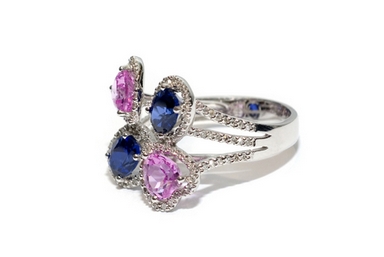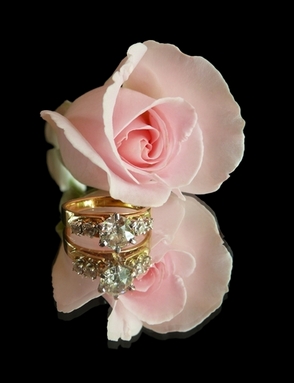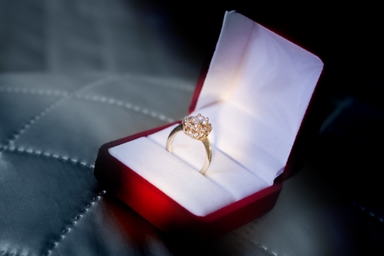|
Buying Engagement Rings
When people are buying engagement rings, it is always a heart-pounding, excitable, happy event. Fore, they are purchasing a piece of jewelry that is opening a door to a new chapter in their lives, a new direction, a future story of love and togetherness that will last forever or maybe for a short time. Who knows what the future holds--but, that's the excitement of love and happiness. So, when you purchase an engagement ring, here's some helpful tips: a.) Look at the cut-quality of the diamond. If a diamond is well-cut, it'll increase in brilliance and sparkle. You can judge a diamond's brilliance and sparkle by way it is cut in shape(e.g., oval, heart, pear), style(e.g., step cut, brilliant, single or full cut), in proportions (e.g., big or small table facet, deep or shallow pavilion) in the finish of the gem, which is separated into polish(e.g., smooth flawless surface, polishing marks, rough girdle, scratches, pits, abrasions) and in symmetry (e.g., misaligned facets, off-center cutlet or table, symmetrical facets, etc.). b.) As far as choosing color of the diamond, it is really based on a persons taste. If you like expensive diamonds, then a colorless diamond ranging higher than the L color. Or if you have distinctive taste, you may want to consider buying a fancy color diamond. The colors and their ranges are from: colorless, white, light yellow, yellow to fancy colors (e.g. red, black, orange, purple, green, pink, etc.) and ranges from D to Z for the colorless to yellow diamonds.
Fancy Color Diamond Rings
c.) The clarity of the diamond is an important factor also. The clarity is ranged in different grades for the prices. GIA have 11 clarity grades for diamonds, such as:
Engagement Rings On Pink Roses
d.) A diamond's carat weight is a unit which equals to 1/5 of a gram. A small diamond's weight is usually expressed in points. One point equals 0.01 carats. These points are labeled as 1 ct TW (one carat total weight), which are different from 1 ct (the weight of one stone). A 1 ct top quality diamond ring could be worth 10 times more than or as much as a 1 ct TW diamond ring of the same quality.
Diamond Wedding Ring
You want to buy a transparent diamond ring with treatment status. An untreated engagement ring has durability and desirability. A natural diamond has withstood the test of time and is more resistant to damage and abrasions. Most people know what kind of engagement ring they want to buy for that special someone in their lives, but, just in case, you want to buy an engagement ring according to your loved one and your taste, style and budget. From Buying Engagement Rings Back To Girl's Friend
|








